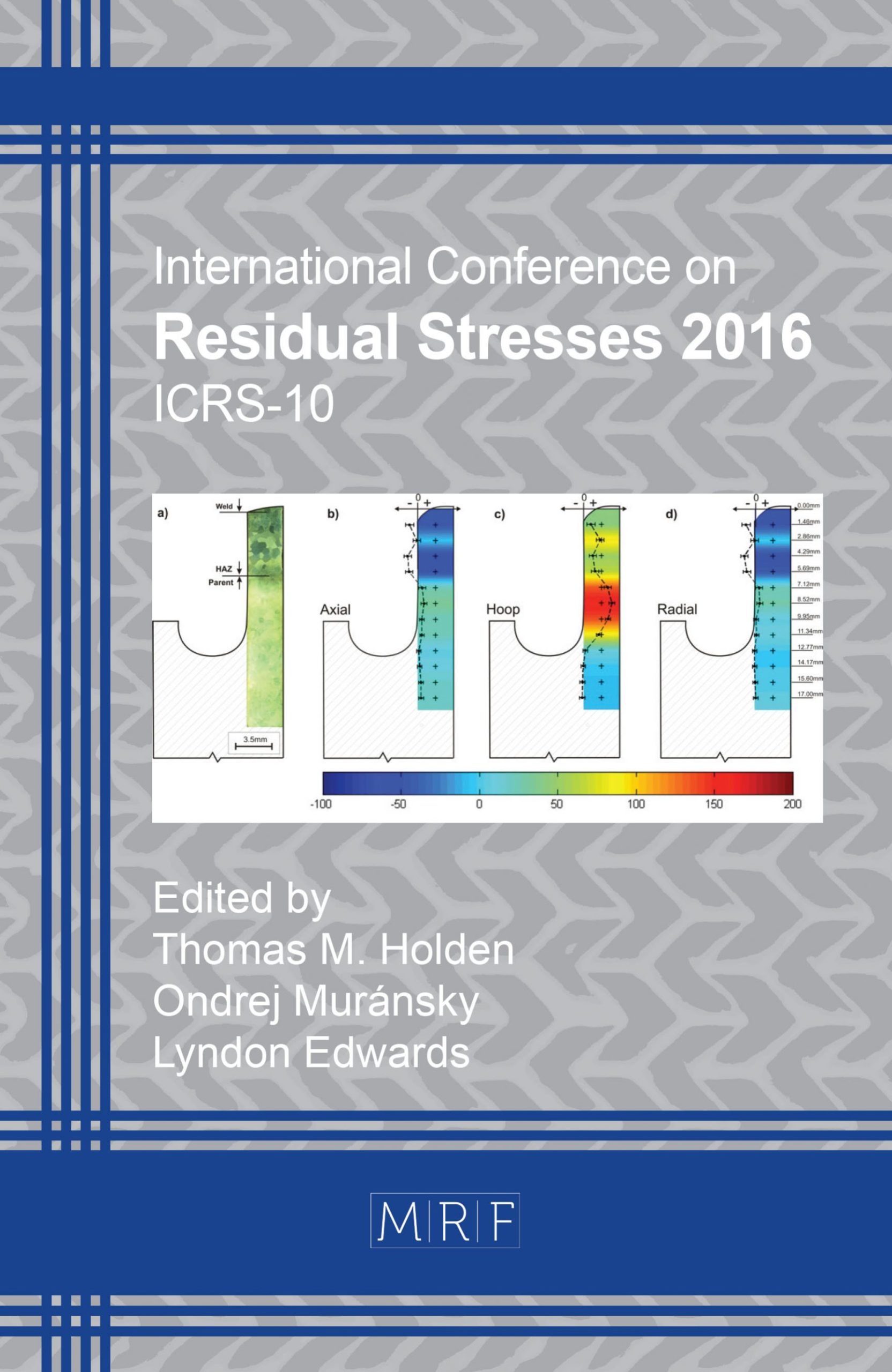Effect of Cooling and Shot Peening on Residual Stresses and Fatigue Performance of Milled Inconel 718
Z. Chen, R.L. Peng, J. Moverare, O. Widman, D. Gustafsson, S. Johansson
download PDFAbstract. The present study highlights the effect of cooling and post-machining surface treatment of shot peening on the residual stresses and corresponding fatigue life of milled Inconel 718 alloys. It was found that tensile residual stresses were created on the milled surface, regardless of the use of coolant, however, the wet milling operation led to a lower surface tension and a reduced thickness of the tensile layer. The shot peening performed on the dry-milled specimens completely annihilated the surface tensile residual tresses and introduced a high level of surface compression. A comparable fatigue life for the wet-milled specimens was obtained as compared with the specimens prepared by dry milling. This is very likely attributed to that the milling-induced surface damage with respect to cracked non-metallic inclusions is the predominant cause of the fatigue failure. The presence of the compressive layer induced by shot peening resulted in a significant increase of the fatigue life and strength, while the extent to which the lifetime was prolonged was decreased as the applied load was increased.
Keywords
Residual Stresses, Surface Integrity, Milling, Shot Peening, Superalloys, Fatigue
Published online 12/22/2016, 6 pages
Copyright © 2016 by the author(s)
Published under license by Materials Research Forum LLC., Millersville PA, USA
Citation: Z. Chen, R.L. Peng, J. Moverare, O. Widman, D. Gustafsson, S. Johansson, ‘Effect of Cooling and Shot Peening on Residual Stresses and Fatigue Performance of Milled Inconel 718’, Materials Research Proceedings, Vol. 2, pp 13-18, 2017
DOI: http://dx.doi.org/10.21741/9781945291173-3
The article was published as article 3 of the book Residual Stresses 2016
![]() Content from this work may be used under the terms of the Creative Commons Attribution 3.0 licence. Any further distribution of this work must maintain attribution to the author(s) and the title of the work, journal citation and DOI.
Content from this work may be used under the terms of the Creative Commons Attribution 3.0 licence. Any further distribution of this work must maintain attribution to the author(s) and the title of the work, journal citation and DOI.
References
[1] K. Jacobus, R. DeVor, S. Kapoor, Machining-induced residual stress: experimentation and modeling, J. Manuf. Sci. Eng. 122 (2000) 20-31.
http://dx.doi.org/10.1115/1.538906
[2] F. Pusavec, H. Hamdi, J. Kopac, I. Jawahir, Surface integrity in cryogenic machining of nickel based alloy-Inconel 718, J. Mater. Process. Technol. 211 (2011) 773-783.
http://dx.doi.org/10.1016/j.jmatprotec.2010.12.013
[3] J. Lindemann, C. Buque, F. Appel, Effect of shot peening on fatigue performance of a lamellar titanium aluminide alloy, Acta Mater. 54 (2006) 1155-1164.
http://dx.doi.org/10.1016/j.actamat.2005.10.043
[4] L. Wagner, Mechanical surface treatments on titanium, aluminum and magnesium alloys, Mater. Sci. Eng. A 263 (1999) 210-216.
http://dx.doi.org/10.1016/S0921-5093(98)01168-X
[5] Y. Choi, A study on the effects of machining-induced residual stress on rolling contact fatigue, Int. J. Fatigue 31 (2009) 1517-1523.
http://dx.doi.org/10.1016/j.ijfatigue.2009.05.001
[6] A. Thakur, S. Gangopadhyay, State-of-the-art in surface integrity in machining of nickel-based super alloys, Int. J. Mach. Tools Manuf. 100 (2016) 25-54.
http://dx.doi.org/10.1016/j.ijmachtools.2015.10.001
[7] I.C. Noyan, J.B. Cohen, Residual stress-measurement by diffraction and interpretation, (1986).
[8] V. Bushlya, J. Zhou, F. Lenrick, P. Avdovic, J. Ståhl, Characterization of white layer generated when turning aged Inconel 718, Procedia Eng. 19 (2011) 60-66.
http://dx.doi.org/10.1016/j.proeng.2011.11.080
[9] Z. Chen, R.L. Peng, J. Moverare, P. Avdovic, J. Zhou, S. Johansson, Surface integrity and structural stability of broached Inconel 718 at high temperatures, Metall. Mater. Trans. A 47 (2016) 3664-3676.
http://dx.doi.org/10.1007/s11661-016-3515-6
[10] R. McClung, A literature survey on the stability and significance of residual stresses during fatigue, Fatigue Fract. Eng. Mater. Struct. 30 (2007) 173-205.
http://dx.doi.org/10.1111/j.1460-2695.2007.01102.x































